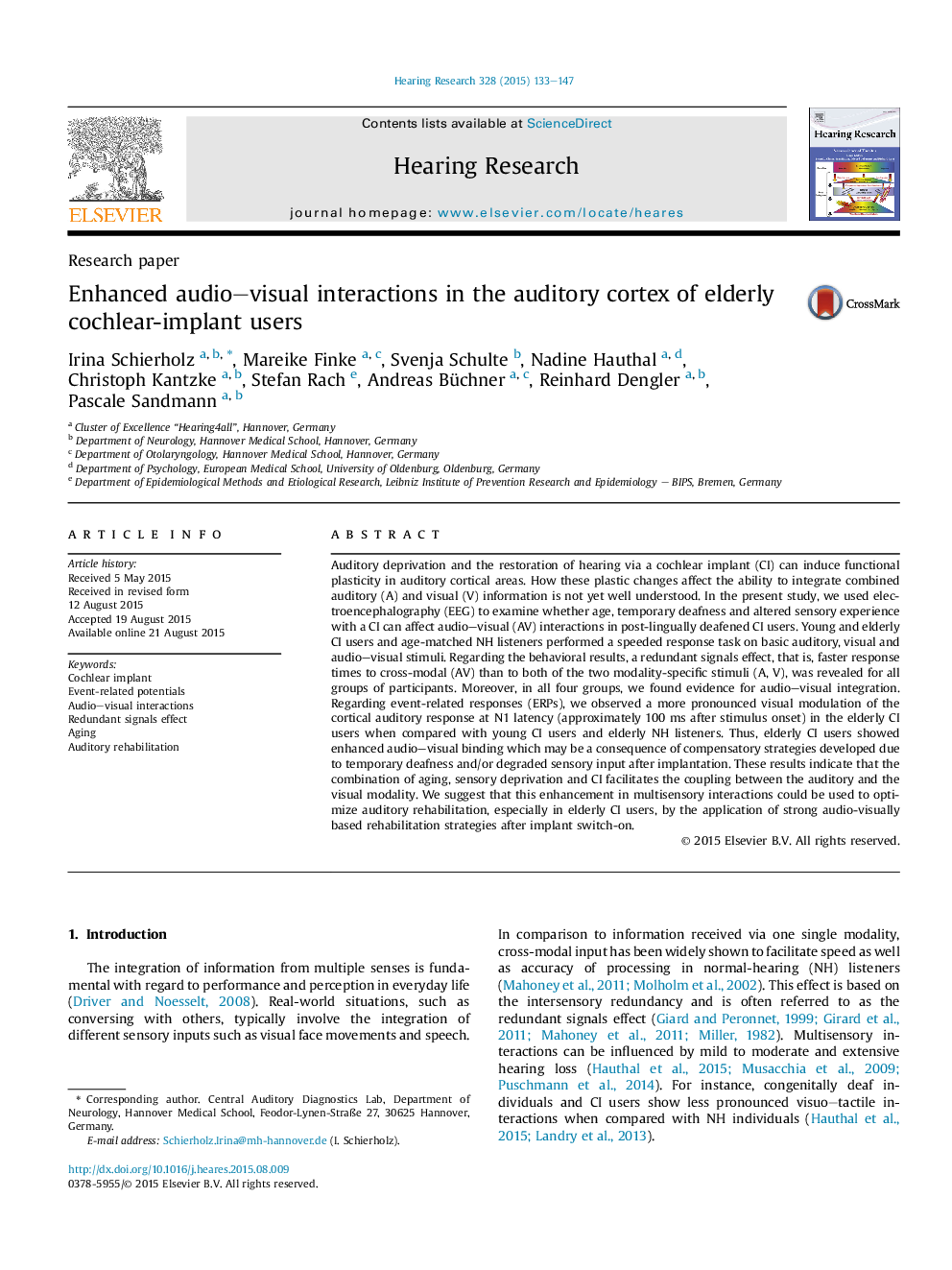| Article ID | Journal | Published Year | Pages | File Type |
|---|---|---|---|---|
| 6287291 | Hearing Research | 2015 | 15 Pages |
Abstract
Auditory deprivation and the restoration of hearing via a cochlear implant (CI) can induce functional plasticity in auditory cortical areas. How these plastic changes affect the ability to integrate combined auditory (A) and visual (V) information is not yet well understood. In the present study, we used electroencephalography (EEG) to examine whether age, temporary deafness and altered sensory experience with a CI can affect audio-visual (AV) interactions in post-lingually deafened CI users. Young and elderly CI users and age-matched NH listeners performed a speeded response task on basic auditory, visual and audio-visual stimuli. Regarding the behavioral results, a redundant signals effect, that is, faster response times to cross-modal (AV) than to both of the two modality-specific stimuli (A, V), was revealed for all groups of participants. Moreover, in all four groups, we found evidence for audio-visual integration. Regarding event-related responses (ERPs), we observed a more pronounced visual modulation of the cortical auditory response at N1 latency (approximately 100Â ms after stimulus onset) in the elderly CI users when compared with young CI users and elderly NH listeners. Thus, elderly CI users showed enhanced audio-visual binding which may be a consequence of compensatory strategies developed due to temporary deafness and/or degraded sensory input after implantation. These results indicate that the combination of aging, sensory deprivation and CI facilitates the coupling between the auditory and the visual modality. We suggest that this enhancement in multisensory interactions could be used to optimize auditory rehabilitation, especially in elderly CI users, by the application of strong audio-visually based rehabilitation strategies after implant switch-on.
Related Topics
Life Sciences
Neuroscience
Sensory Systems
Authors
Irina Schierholz, Mareike Finke, Svenja Schulte, Nadine Hauthal, Christoph Kantzke, Stefan Rach, Andreas Büchner, Reinhard Dengler, Pascale Sandmann,
